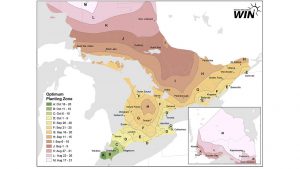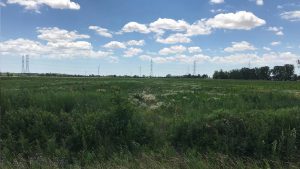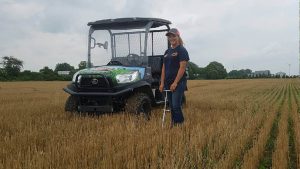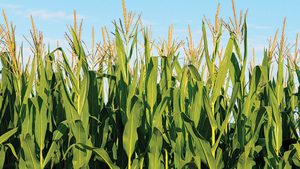Cropside: Planting wheat
AGRONOMIC INFORMATION FROM ONTARIO'S CROP SPECIALISTS

of Agriculture, Food and Rural Affairs
OPTIMUM PLANTING DATES FOR WINTER WHEAT IN ONTARIO
AS WE SAW with the 2019 winter wheat crop, if winter wheat is planted late and if conditions are not fit, there is a greater risk of winter survival issues. Seeding depth, plant population and the use of a starter fertilizer are also significant factors that need special attention at planting.
Ontario’s Optimum Winter Wheat Planting Date map (Figure 1) is a great resource to help you determine the optimum date for your region. These dates were developed using recent weather data inputed into a formula developed by Andy Bootsma, AAFC researcher. The formula was developed using Ontario field trials and climate data. For more information on this research go to: https://sites.google.com/site/andybootsma/home/winter-wheat-seeding-date-trends.
When determining the optimum date, find your location on the map and look at the dates on the lines on either side of you. The planting date range for that region falls between those two dates. The closer you are to one line means the optimum planting date is closer to that end of the range. If, for example, you live in the London area, the optimum planting date for your region falls between September 25 and September 30.

This map can be a helpful tool when determining the ideal time to get your winter wheat planted; however, it is a guideline and you should also make sure conditions are fit for planting when you are ready to go. If the conditions aren’t right and waiting a day or two beyond the optimum date means better planting conditions, then wait for the better planting conditions.
Farmers who didn’t get in a corn or soybean crop this year, may be anxious to start winter wheat planting significantly earlier than what is recommended. But be careful — while it may come as a surprise, you can plant winter wheat too early due to the increased risk of snow mould, lodging, and Barley Yellow Dwarf Virus (BYDV).
It is generally not recommended to seed more than 10 days prior to the optimum date for your region. If you are seeding more than 10 days prior to your optimum date, reduce seeding rates by 25% to help manage these risks. If you are planting later than the optimum date, the seeding rate should be increased by 200,000 seeds/acre per week to a maximum of 2.2 million seeds/acre to compensate for the delayed planting.
It is also important to pay special attention to your seeding depth. Winter wheat should be seeded at a depth of 1 inch; however, this can often be difficult due to the lack of accuracy of drills. Therefore, you should target 1.25 — 1.5 inches to ensure you are seeding your wheat deep enough. Shallow seeding can result in plants being more prone to winterkill and heaving.
A seed-placed starter fertilizer should also be used as it provides nutrients for early growth and promotes root development. As a result, we see an improvement in winter survival and crop uniformity which helps with disease management the following spring.
The planting date map can be found on www.GoCereals.ca under the downloads section of the “Resources” page. •


























